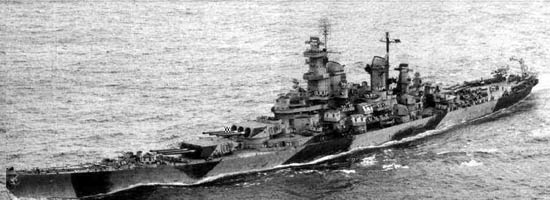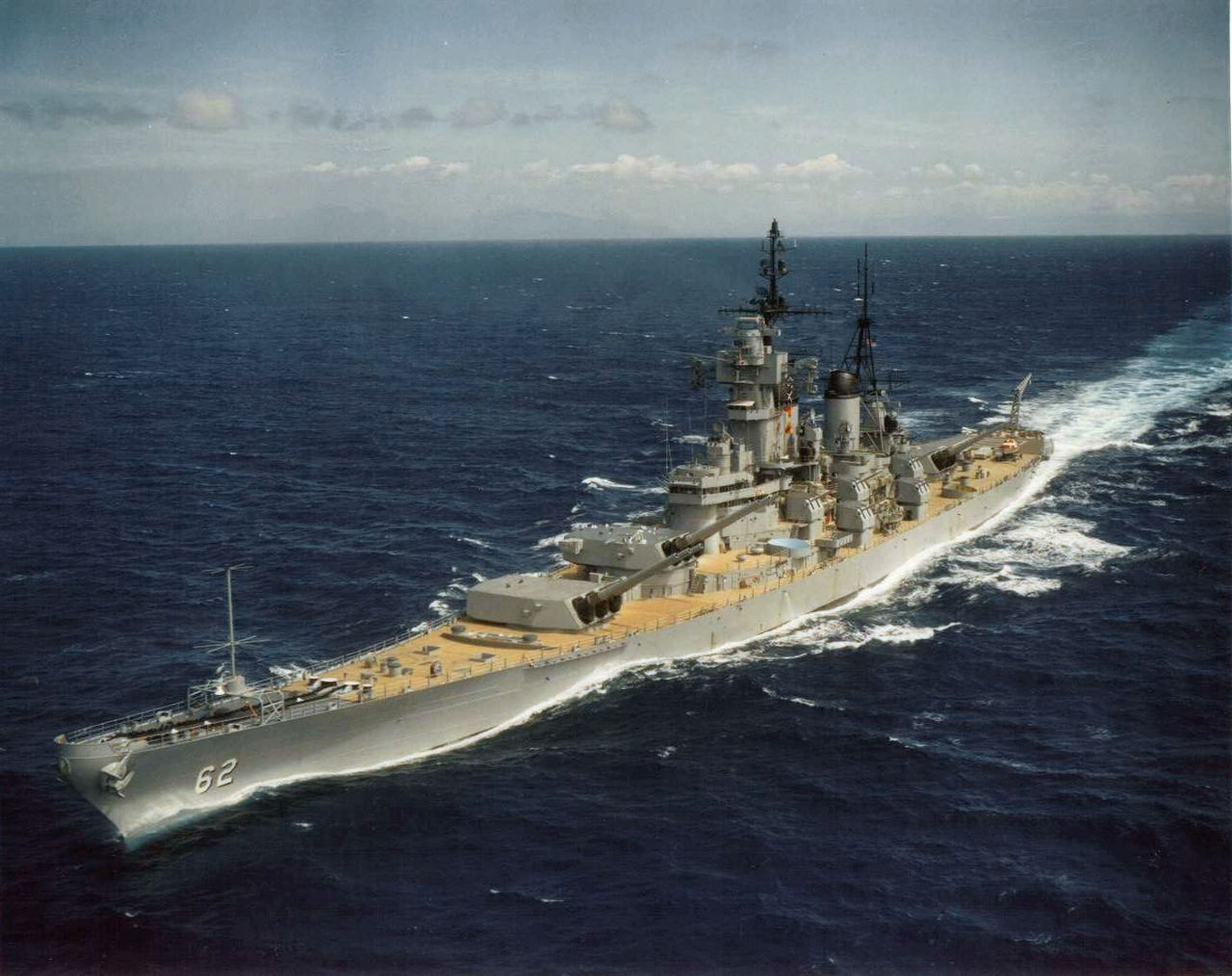
The "Firecracker" shell could scatter 400 grenades over nine acres-projectiles that wouldn't do much for taking down big buildings, but it would kill pretty much anyone in its path.

The Iowa sailors used various types of blind load / inert ballistics for target practice, but when they really wanted to hit (or pierce) something, they had High Capacity general purpose rounds as well as an "Armor Piercing" shell that would go through 30 feet of concrete and a nuclear shell named "Katie." There were also 20mm and 40mm guns once on board, but they were removed by the time the Iowa was used in the Cold War.

Navy ship, used primarily for anti-aircraft missions: the nine 16-inch guns mounted on three stacked turrets that you can see today (capable of carrying 2000 tons of firepower). But the ship isn't unwieldy-because at 108 feet at her widest point, she's narrow enough to fit through the Panama Canal (which she did, in 1944). The non-profit that now runs the permanently moored ship has already painted over the rusted chains, and they'll eventually replace the decks.Īt 887 feet (about 0.15 nautical miles) in length, that's a lot of restoration to be done. And there's way more to it than meets the eye.Īlthough this Iowa (BB-61) has gone through various refurbishments over time, including some cosmetic clean-up once she was taken out of service for good, she still needs its wooden decks restored and replaced.ĭuring the 1980s Cold war effort, the original teak was replaced by Douglas fir-which was more affordable, but also more likely to rot and need replacement. It seems like there's very little that you don't get to see as you round each corner and wander each corridor of the Iowa, but this is a pretty giant ship. The USS Iowa, built at the Brooklyn Navy Yard, was the lead ship of the last class of battleships in the Navy, having served in three significant commissions: World War II, the Korean War, and the Cold War. Bit by bit, I'm exploring people, places, and things that are somehow connected to my life and to each other.Īnd so, four years after the USS Iowa emerged from the Navy's mothball fleet and made the Port of LA her permanent home, it was time for me to know more about battleships than what I experienced playing (and winning) the board game as a child. None of the stories really felt very connected. I could commit enough of them to my short-term memory to pass the tests, write the papers, and get an A or B on my report card, but none of it ever made much sense to me.

I didn't have the patience for learning all the names and dates and places. I was never good at history (or "social studies") in school.

Circa 1987 (Photo: National Museum of the U.S.


 0 kommentar(er)
0 kommentar(er)
